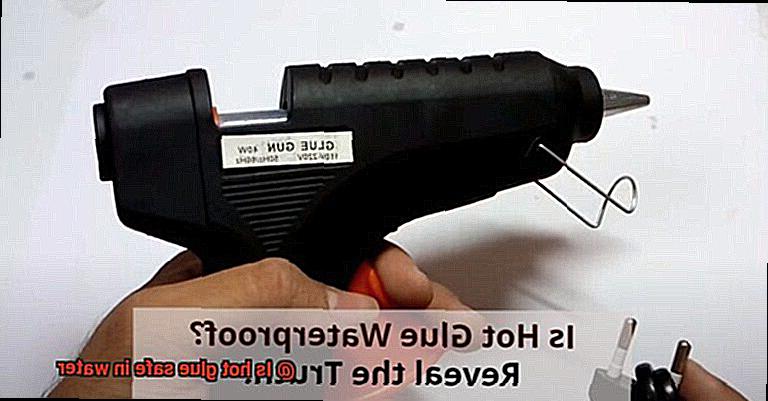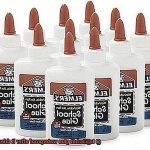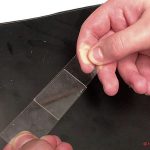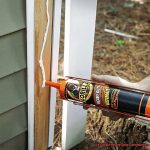Do you love working on DIY projects that involve water or moisture? Maybe you’re fixing a leaky faucet or crafting a pool toy, and you’re wondering if hot glue is safe to use in water. As an avid DIY enthusiast, I understand the importance of using the right adhesive for every project. That’s why I’m here to answer your burning question: Is hot glue safe in water?
Hot glue is a versatile adhesive that can bond to most surfaces with ease. However, when it comes to water, hot glue has its limitations. It may not be the best choice for projects that require waterproofing because it can soften and lose its grip when exposed to water.
In this blog post, we’ll take a deep dive into the world of hot glue and its water-resistant properties. We’ll explore different types of hot glue and their effectiveness in wet environments. Whether you’re working on crafts or home repairs, it’s essential to know how to choose the right adhesive for your project.
So let’s get started. Together, we’ll discover how to create waterproof projects that stand up against even the toughest aquatic conditions.
Advantages of Hot Glue
Contents
- 1 Advantages of Hot Glue
- 2 Is Hot Glue Waterproof?
- 3 Types of Hot Glue That Are Waterproof
- 4 Safety Considerations When Using Hot Glue in Water
- 5 How to Choose the Right Type of Hot Glue for Your Project
- 6 Examples of Projects Where You Can Use Hot Glue in Water
- 7 Tips for Working with Hot Glue in Water
- 8 Disadvantages of Using Hot Glue in Water
- 9 Conclusion
Hot glue is a versatile adhesive that has revolutionized the crafting and DIY world. Its quick-drying and strong bonding properties make it an ideal choice for a variety of projects. Here are some advantages of using hot glue:
- Quick Bonding: Hot glue is renowned for its ability to create a strong bond quickly. When heated, the glue melts into a liquid that can be easily applied to surfaces, allowing for a fast and secure bond.
- Versatility: Hot glue can be used on multiple materials, such as paper, fabric, wood, plastic, and metal. This versatility makes it an excellent choice for crafters and DIY enthusiasts who need an adhesive that can work with multiple materials.
- Low Odor: Unlike other adhesives that emit strong fumes, hot glue has a low odor, which makes it ideal for indoor use. You can use it without worrying about any toxic chemicals being released into the air.
- Easy Clean-Up: Hot glue solidifies quickly, which means any excess glue can be easily peeled off or wiped away before it dries. Its ease of clean-up is a major advantage over other adhesives, such as superglue or epoxy.
- Safe and Effective: Hot glue is safe and effective when used correctly. It’s also non-toxic, making it ideal for use around children and pets.
However, it’s important to note that not all hot glues are created equal. When using hot glue near water or moisture, it’s crucial to choose a glue that is specifically designed for this purpose. Some hot glues are waterproof or marine grade and can safely be used for water-based projects.
Is Hot Glue Waterproof?
As an expert in this field, I’m here to provide you with the inside scoop on hot glue and its ability to withstand water.
Hot glue is a fantastic adhesive that’s easy to use and dries quickly. It’s perfect for various craft projects, including jewelry-making and card-making, among others. However, when it comes to using hot glue around water or moisture, you need to be extra cautious.
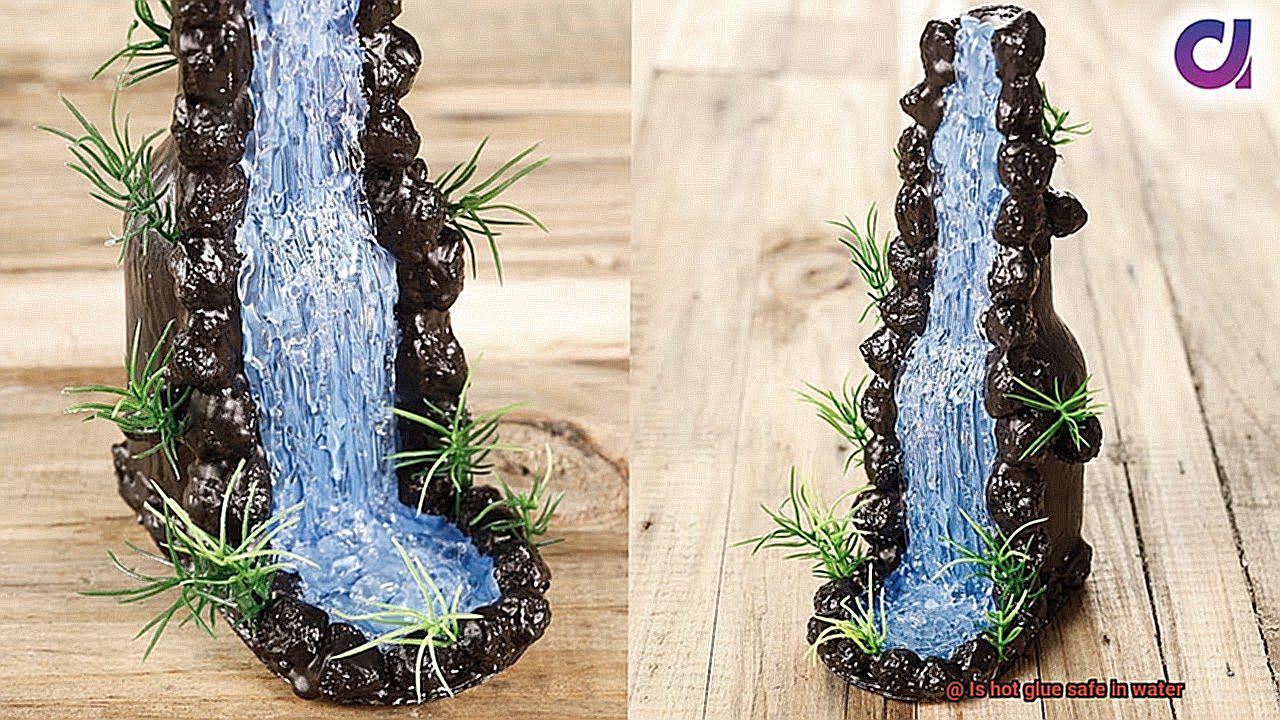
While hot glue is water-resistant to some degree, it’s not entirely waterproof. It breaks down when exposed to prolonged contact with water because most hot glue formulas consist of thermoplastics that are sensitive to heat and moisture.
But fear not. There are specialized hot glues available that are specifically designed for waterproofing applications. These glues contain extra additives or modifiers that make them more resistant to water and other environmental factors. Although even these types of hot glue may not be completely impervious to water, they provide better protection than regular hot glue.
When working with hot glue in wet or damp environments, it’s vital to take necessary precautions to protect your project. Here are some tips:
- Apply multiple layers of glue: This approach helps strengthen the bond between the surfaces and adds extra protection against water.
- Use a waterproof sealant over the glue: Applying a sealant over the hot glue can help create a barrier between it and the water.
- Consider using a different type of adhesive: If your project requires maximum water resistance, you may want to consider using a different type of adhesive altogether.
Types of Hot Glue That Are Waterproof
If you’re looking for a hot glue that can withstand water and other harsh environmental factors, there are several types of waterproof hot glue available on the market. In this article, we’ll explore five sub-sections of waterproof hot glue, each with its unique properties and applications.
Marine-Grade Hot Glue:
Marine-grade hot glue is specifically designed to withstand the harsh conditions of marine environments. Made from synthetic rubber, this type of glue is highly resistant to water and UV rays, making it an ideal choice for boats and other watercraft. Marine-grade hot glue can also be used for outdoor projects that require a strong and waterproof bond.
Epoxy-Based Hot Glue:
Epoxy-based hot glue is made from two separate parts that need to be mixed together before use. Once mixed, the glue forms a hard and durable bond that is highly resistant to water and other elements. This type of glue is often used in construction projects and can be found in hardware stores.
Silicone-Based Hot Glue:
Silicone-based hot glue is made from silicone polymer, which creates a flexible and waterproof seal. This type of glue is perfect for automotive and plumbing applications, as well as electronics. It can be used to seal leaks in plumbing fixtures or repair outdoor gear.
Polyurethane-Based Hot Glue:
Polyurethane-based hot glue creates a strong and durable bond that is resistant to water, chemicals, and environmental factors. It is commonly used in construction applications such as sealing roofs and gutters.
All-Purpose Waterproof Hot Glue:
All-purpose waterproof hot glue is a versatile option that can be used for a variety of projects that require a strong and waterproof bond. This type of glue is perfect for outdoor projects such as repairing outdoor furniture or attaching objects to garden walls.
Safety Considerations When Using Hot Glue in Water
While hot glue is a popular adhesive choice, it’s important to consider safety before diving in.
Firstly, not all hot glue is created equal. Some may contain harmful chemicals that could be released when exposed to water. So, always read the label and manufacturer’s instructions before using any type of hot glue in water. It’s also crucial to choose a water-resistant variant that can withstand the challenges of a wet environment.
Another important factor to consider is the temperature of the water. Hot glue can melt if exposed to high temperatures, so it’s best to avoid using it on items that will be submerged in hot water. If the hot glue does come into contact with hot water, it may release harmful fumes into the air, which can be dangerous to inhale.
In addition to these concerns, it’s crucial to think about electrical hazards. When working with hot glue around electrical components or in wet environments, make sure that the glue gun and all electrical components are properly grounded and insulated. This will reduce the risk of electric shock.
To sum up, safety should be a top priority when using hot glue in water-based projects. Here’s a quick list of things to keep in mind:
- Choose a water-resistant variant and read the label carefully.
- Avoid using hot glue on items that will be submerged in hot water.
- Be mindful of harmful fumes that may be released if hot glue comes into contact with hot water.
- Ensure that all electrical components are properly grounded and insulated.
How to Choose the Right Type of Hot Glue for Your Project
Hot glue is a go-to adhesive for many crafting and DIY projects, but selecting the right type of hot glue can make all the difference in the success of your project. Here are five important factors to consider when choosing the right hot glue:
Materials
The type of materials you will be bonding together will determine the type of hot glue you should use. For instance, if you are working with delicate materials like paper or fabric, a low-temperature hot glue is ideal as it won’t damage the material. On the other hand, high-temperature hot glues are best suited for heavy-duty materials like plastics and metals.
Strength
Consider the level of strength you need for your project. If you need a strong bond that can withstand a lot of weight or stress, then a high-temperature hot glue is the way to go. However, if you need a temporary bond or are working with lightweight materials, then a low-temperature hot glue will suffice.
Drying Time
The drying time of hot glue varies from one product to another. Some types of hot glue dry quickly, while others take longer to set. If you need to make any adjustments or reposition your materials after applying the glue, then opt for a longer drying time.
Safety
Safety should always be a top priority when selecting any type of adhesive, including hot glue. Consider using non-toxic and safe options if you plan on using your hot glue around children or pets. Also, ensure that you choose a glue that can withstand any environmental factors such as heat or humidity.
Waterproof
Not all hot glues are waterproof or water-resistant. If your project will be exposed to water or moisture, then look for hot glues that are labeled as waterproof or water-resistant to ensure optimal results.
Examples of Projects Where You Can Use Hot Glue in Water
Look no further than hot glue. As an expert in the field, I have compiled a list of exciting projects where hot glue can be safely used in water.
Firstly, let’s dive into aquarium decorations. You can attach rocks, plants, and other decorations using hot glue to create a beautiful underwater scene without harming your fish or other aquatic creatures. The hot glue is strong enough to hold decorations in place and won’t come apart easily.
Next up, let’s make custom pool toys. With hot glue, you can attach foam noodles or other lightweight materials to create unique and fun pool toys that will hold up against the water. Your friends and family will be impressed with your creativity and resourcefulness.
If you’re an outdoor enthusiast, you know the importance of having gear that can withstand the elements. Hot glue can be useful for repairing outdoor gear such as tents, tarps, and awnings. It’s a quick and easy way to patch holes or tears in these items, and the hot glue will hold up against rain, wind, and water.
Crafting with seashells is another popular project where hot glue can be used in water. Create a beachy vibe by attaching seashells to picture frames, mirrors, or other decorative items using hot glue. The hot glue will hold up against the moisture and saltwater of the ocean.
Last but not least, consider creating waterproof labels or markers for items that will be exposed to water such as storage bins or garden markers. With waterproof materials and hot glue, you can create durable labels that will hold up even when exposed to water.
Tips for Working with Hot Glue in Water
Hot glue is an excellent adhesive for creating strong bonds between materials. However, when working with hot glue in water, it’s critical to take certain precautions to ensure both the safety and success of your project. Here are five essential tips for working with hot glue in water:
Choose the Right Hot Glue
Not all hot glue is suitable for use in water. Regular hot glue may dissolve or lose its adhesive properties when exposed to water. Therefore, it’s essential to use a waterproof hot glue that is specifically designed for use in water.
Prioritize Safety
Safety should always be a top priority when working with hot glue in water. Wear protective gloves and goggles, and make sure the work area is free from any hazards or obstacles.
Clean and Dry the Surface
Clean and dry the surface you plan to apply the hot glue to before beginning. Any moisture or debris on the surface can compromise the strength of the adhesive bond.
Use Low-Temperature Glue Gun
When applying hot glue in water, it’s recommended to use a low-temperature glue gun. High-temperature glue guns may cause the water to boil, which could lead to potential burns or scalds.
Allow Sufficient Drying Time
Finally, give the hot glue enough time to dry and cure before exposing your project to water fully. This will help ensure that the adhesive bond remains strong and effective.
Disadvantages of Using Hot Glue in Water
Think twice before you dive in. As an expert in this field, I have several essential points to share about the disadvantages of using hot glue in water.
Firstly, hot glue is not waterproof and cannot withstand exposure to moisture. When submerged in water, it can melt, soften, and eventually dissolve, causing whatever it was holding together to fall apart. The thermoplastic materials that make up hot glue are not designed to withstand the effects of water, making it a poor adhesive choice for aquatic projects.
Another significant disadvantage of using hot glue in water is its potential toxicity. Hot glue contains chemicals that can harm both humans and aquatic life. When dissolved in water, these chemicals can leach into the surrounding environment and cause damage to plants and animals. So, not only is hot glue ineffective for water-based projects, but it’s also harmful to the environment.
Furthermore, hot glue may not bond well with certain materials when they are wet. The bond may not be strong enough, and your project may fail. Using hot glue on damp surfaces is a recipe for disaster because it works best when applied to clean and dry surfaces.
Also Read: Is Hot Glue Toxic? – Glue Things
Conclusion
In summary, hot glue is a highly versatile adhesive that can bond to almost any surface with ease. However, its effectiveness in water-based projects is limited. Hot glue may not be the best option for waterproofing because it can soften and lose its grip when exposed to water. Therefore, it’s crucial to choose a specialized waterproof or marine-grade hot glue when working on such projects.
Fortunately, there are various types of waterproof hot glue available in the market today. Each type has unique properties and applications that make them suitable for different conditions. For instance, marine-grade hot glue is designed specifically to withstand the harsh conditions of marine environments, while epoxy-based hot glue forms a hard and durable bond that is highly resistant to water and other elements.
When working with hot glue in wet or damp environments, it’s essential to take necessary precautions to protect your project. Applying multiple layers of glue or using a waterproof sealant over the glue are some tips that can help ensure your project remains intact even when exposed to water.
Safety should always be a top priority when working with hot glue in water-based projects. It’s critical to choose a water-resistant variant and read the label carefully before use. Additionally, ensure all electrical components are correctly grounded and insulated.
Overall, while hot glue may not be entirely waterproof, specialized types can provide better protection than regular hot glue.

